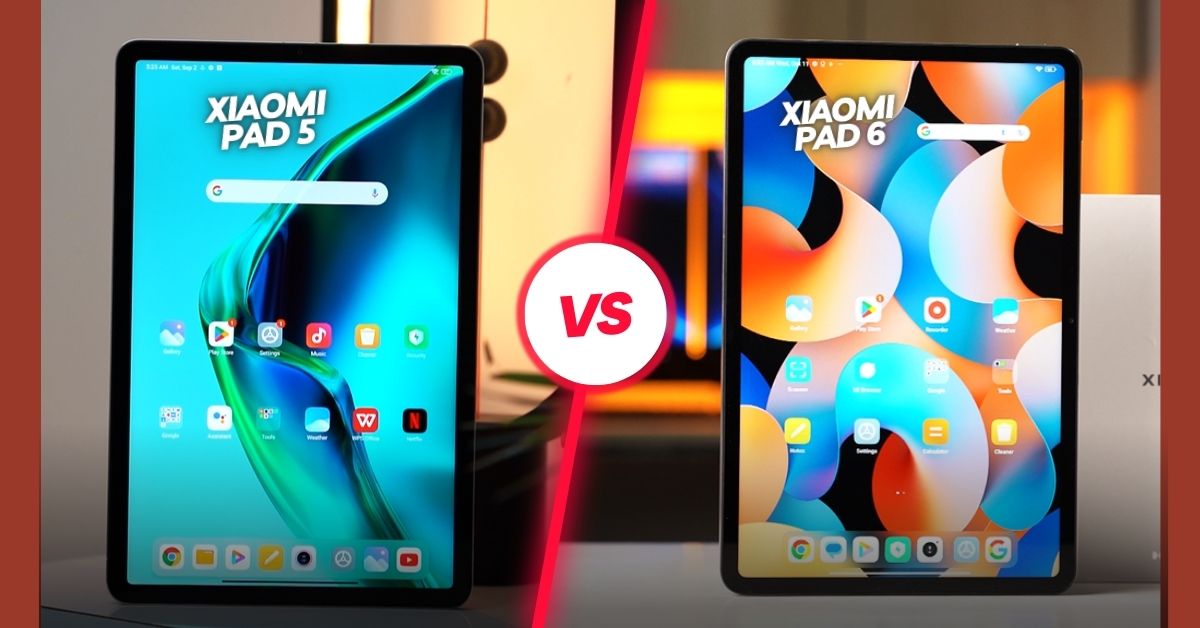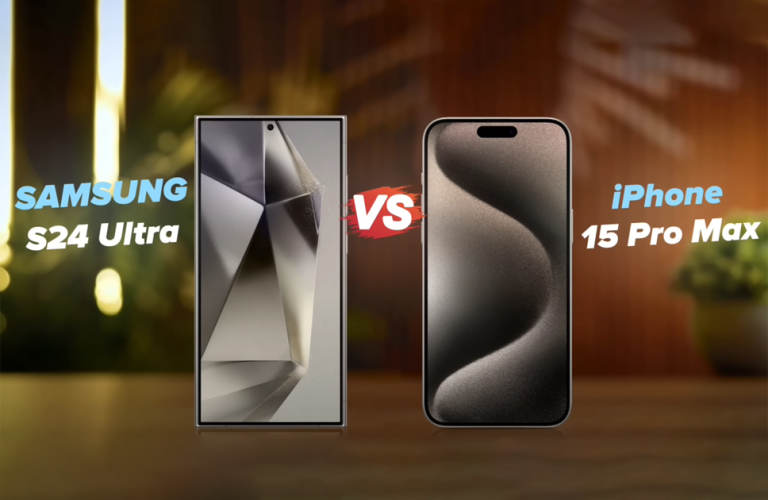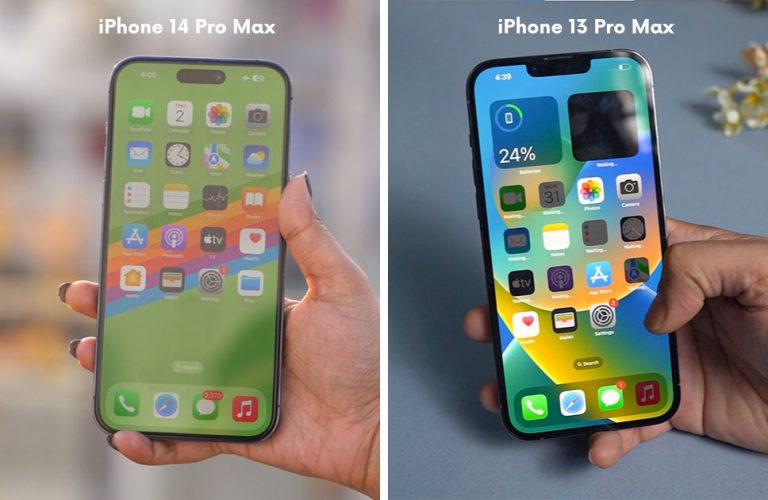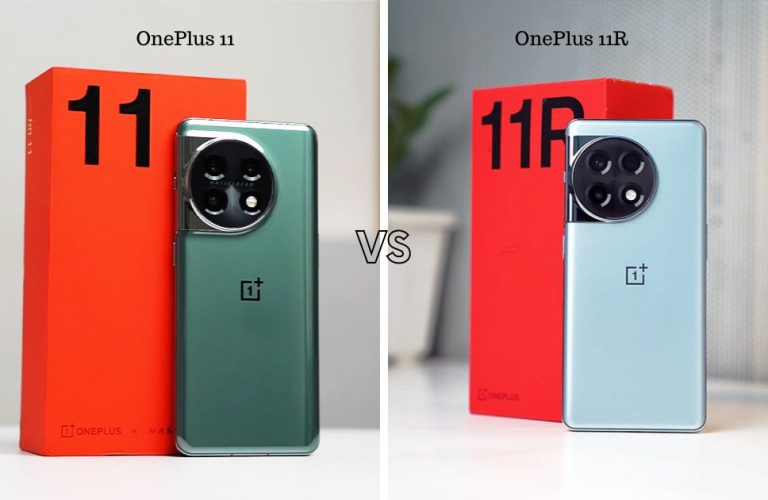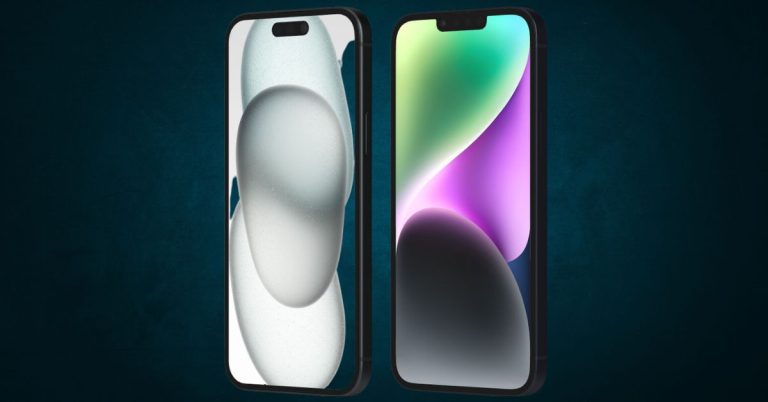Xiaomi Pad 6 vs Xiaomi Pad 5: Noticeable Upgrades
In the realm of tablets, Xiaomi has gathered a lot of attention with its impressive offerings over the years. A standout moment was the 2021 release of the Xiaomi Pad 5, marking the company’s successful return. The tablet boasted an overhauled design, a potent Qualcomm chipset, and commendable battery longevity.
Fast forward to 2023, Xiaomi has unveiled the eagerly anticipated Xiaomi Pad 6. This latest iteration ups the ante with an upgraded Qualcomm chipset, an enhanced design and display, and further improvements in battery life. The question arises: Is it wiser to stick with the tried-and-true Pad 5, or is the attraction of the Pad 6’s newer designs and hardware, albeit with a slightly elevated price tag, too compelling to resist?
In today’s comparison between the xiaomi pad 6 vs xiaomi pad 5, let’s take a closer look at their features to help you make an informed decision about which tablet aligns best with your needs and preferences.
Table of Contents
- Key Differences
- Design & Build
- Display
- Camera
- Performance
- Software
- Battery Life
- Specifications
- Verdict
1. Xiaomi Pad 6 Vs Pad 5: Key Features
| Xiaomi Pad 5 | Xiaomi Pad 6 |
|
|
|
|
|
|
|
|
|
|
|
|
2. Xiaomi Pad 6 Vs Pad 5: Design
- Glass front
- Aluminum frame & Back (Pad 6)
- Aluminum Frame & Plastic back (pad 5)
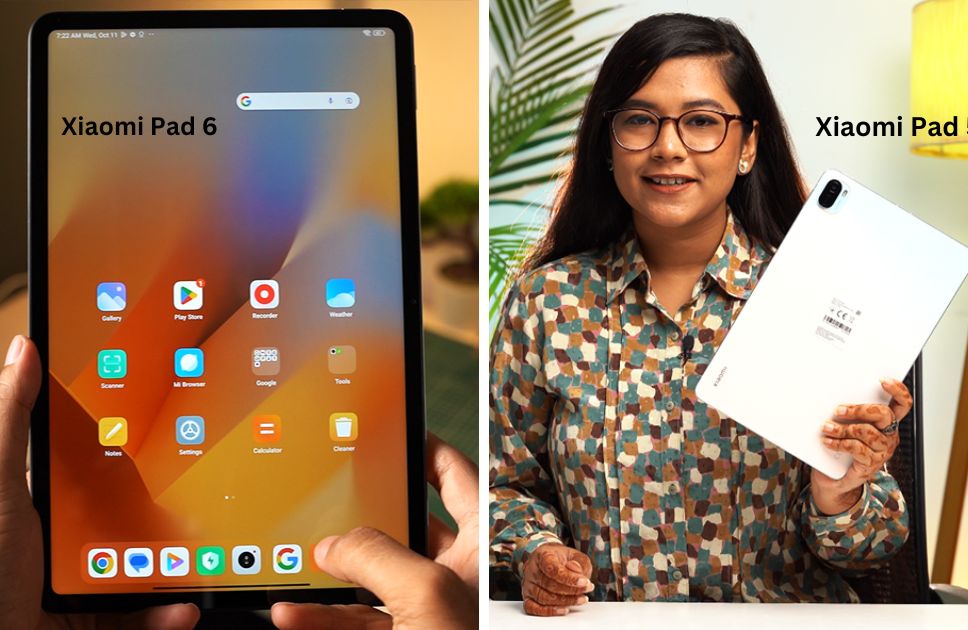
The Xiaomi Pad 5 boasts an eye-catching design with flat edges that exude sophistication. The tablet’s top and bottom house a total of four speakers, accompanied by Dolby Atmos branding for an immersive audio experience. The bottom edge features the Type-C port, while the side accommodates the magnetic pin, although this differs from the newer Pad 6 where it’s situated on the back.
The build quality remains noteworthy, featuring an aluminum frame and a plastic back. Despite the plastic back, the tablet’s rectangular design maintains a premium feel. However, the Pad 5 is somewhat weighty at 511g, with a thickness of 6.9mm, slightly bulkier than its successor, the Pad 6, which has a notably slimmer and lightweight build. Worth mentioning is the absence of water resistance ratings, emphasizing the importance of safeguarding the device from moisture.
In comparison, the Xiaomi Pad 6 boasts a refined design that sets it apart from its predecessor, prioritizing aesthetics and functionality. With a sleek, flat body, the tablet takes on a modern look, contrasting with its forerunner’s design. Its camera arrangement, reminiscent of the Xiaomi 13, adds to its contemporary appeal.
Underneath the camera module, a magnetic pin connector is accompanied by Xiaomi branding, which was on the side of the previous Pad 5. Now, with this change it allows a more easier way to attach to a magnetic keyboard for heightened productivity. Turning the Pad 6 in portrait mode reveals speakers flanking a Dolby Atmos-branded power button.
The tablet’s base holds a USB Type-C port and extra speakers, totaling four for immersive audio. The right side features a magnetic slot for the Xiaomi Smart Pen and a volume rocker. Available in black, blue, and gold, the Pad 6 offers varied aesthetics. Its aluminum frame, back, and Gorilla Glass 3 display contribute to impressive build quality, though waterproofing is absent.
3. Xiaomi Pad 6 Vs Pad 5: Display
- 11.61’’, 144Hz on Pad 6
- 11″, 120Hz on Pad 5
- Dolby Vision + HDR10 Both Tablets
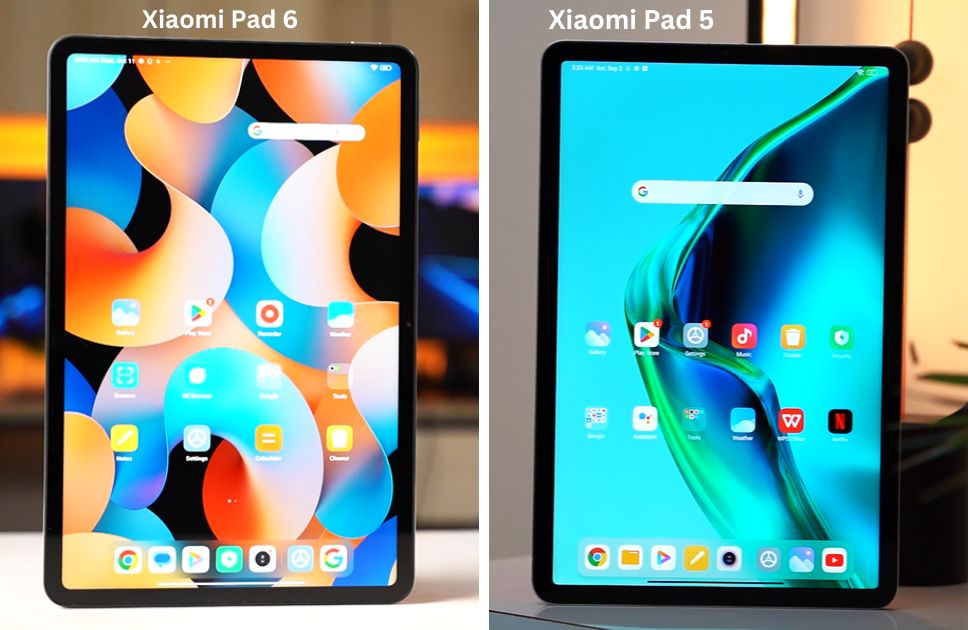
The Xiaomi Pad 5 features an 11-inch IPS LCD panel akin to its sibling, the Pad 6. Though its resolution stands at 1600 x 2560 pixels, offering 274ppi, the display quality remains impressive. And you get around 82.8% screen-to-body ratio which was a pretty good display when it was launched in 2021. With HDR10 and Dolby Vision support like the Pad 6, the tablet ensures an engaging content consumption experience, especially for streaming platforms like Netflix.
Enhancing user interface smoothness is the 120Hz refresh rate, a commendable feature at its price point, considering the lower cost compared to the newer Pad 6. Boasting 1 billion colors, the display incorporates eye protection through a low blue light feature, prioritizing eye comfort. While the Pad 6 offers superior certification, the Pad 5 shares a similar eye protection mechanism.
And in terms of the Xiaomi Pad 6’s display, you get upgrades in major resolution and even the smoother refresh rate as well. With a similar 11.0-inch IPS LCD screen, but now with a little extra 83.6% screen to body ratio so clearly you get a slimmer bezel of the display, it delights movie and content enthusiasts.
Well, The 1800×2880 pixel resolution offers around 309 pixels per inch, promising vivid and detailed visuals. Notably, the refresh rate has been raised to 144Hz from the Pad 5’s 120Hz, delivering smoother app transitions and browsing experiences.
Dolby Vision and HDR10 support enhance the tablet’s cinematic appeal, bringing vibrant colors and dynamic contrast to videos. The DCI-P3 color gamut with dynamic compensation ensures accurate and rich hues. Additionally, TÜV certification caters to prolonged viewing comfort, making the Xiaomi Pad 6 an enticing choice for immersive entertainment.
4. Xiaomi Pad 6 Vs Pad 5: Camera
- 13MP Main Camera
- 4K Recording
- 8 MP Front Camera (1080p REC)
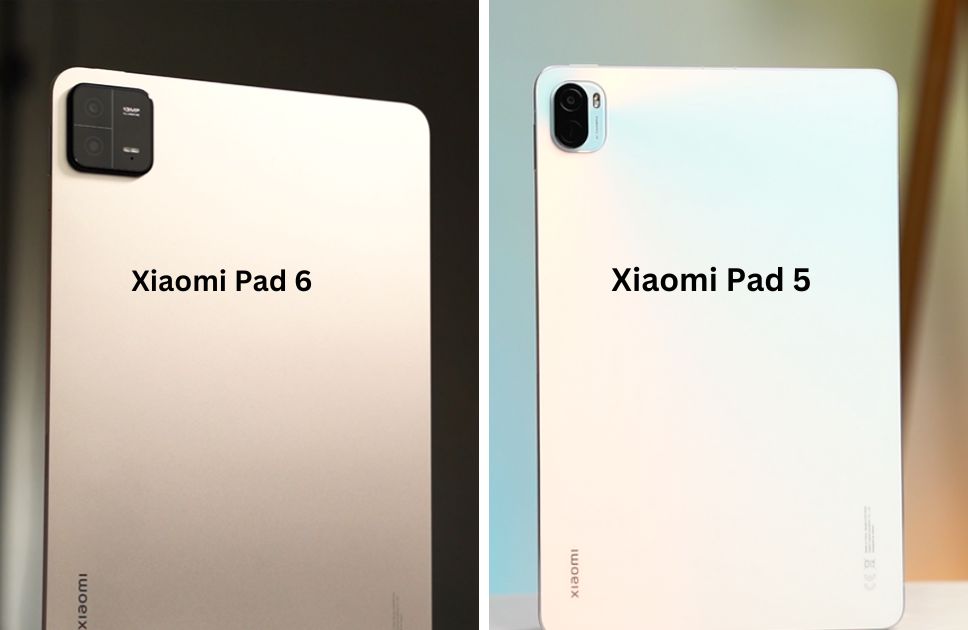
The Xiaomi Pad 5 boasts a camera setup akin to its newer counterpart, the Pad 6. Featuring a 13MP rear camera with f/2.0 aperture and dual LED flash, it captures impressive daylight photos with quality contrast and sharpness.
The night mode functions well, delivering decent colors and minimal noise. Video recording offers versatility, supporting 4K at 30fps and 1080p at 30fps and 60fps—ideal for budget-conscious users seeking a quality camera in a tablet from 2021.
The 8MP front camera with f/2.0 aperture captures satisfactory photos, and its 1080p video recording capability proves valuable for video calls and meetings, making the Pad 5 a solid choice.
Now let’s take a look at the Xiaomi Pad 6’s camera system that delivers satisfying results, which has similar camera megapixels like the Pad 5 except the upgraded apertures. Sporting a 13 MP camera with f/2.2 aperture, daylight photography shines with sharpness, vibrancy, and impressive detail.
Even distant subjects maintain clarity with accurate contrast and minimal noise. Portrait mode yields sharp subjects, especially in human photography. Low-light conditions benefit from night mode, producing colored and sharp shots with minimal noise.
Video recording offers up to 4K at 30fps, which is just like last year no upgrade there, and videos show good detail thanks to upgraded chipset and better processing in the Pad 6. There is also good contrast in videos with Wide Dynamic Range.
The 8MP front camera captures decent selfies and 1080p video, making it suitable for meetings and calls. While not on par with dedicated smartphone cameras, the front camera delivers satisfactory quality.
5. Xiaomi Pad 6 Vs Pad 5: Performance
- Qualcomm Snapdragon 870 (7nm)
- Qualcomm Snapdragon 860 (7nm)
- UFS 3.1
The performance prowess of the Xiaomi Pad 6 and Pad 5 is a definitive highlight, both capitalizing on Qualcomm chipsets to deliver commendable experiences.
The Xiaomi Pad 5 houses the Qualcomm Snapdragon 860, a 7-nanometer chipset that ensures swift operation. While its clock speed processing slightly trails the Pad 6, at 2.96GHz, the 6GB LPDDR4X RAM contributes to seamless multitasking and responsive performance.
Gaming, especially in FPS titles like Fortnite and Garena Free Fire, thrives on this tablet as you get 120Hz refresh rate for smoother performance. The inclusion of Dolby Vision and Dolby Atmos heightens cinematic and audio experiences, though the Bluetooth 5.0 technology is slightly outdated but still good connectivity in terms of bluetooth devices.
In contrast, the Xiaomi Pad 6 elevates performance with an upgraded Qualcomm Snapdragon 870 chipset, delivering a faster clock speed of 3.2GHz for enhanced responsiveness. Accompanied by 8GB LPDDR5 RAM and UFS 3.1 storage, multitasking and app handling improve, with gaming benefits felt more intensely.
The 144Hz refresh rate contributes to smoother gaming, particularly evident in high-FPS games like PUBG MOBILE and Fortnite. Although Dolby Vision and Dolby Atmos remain consistent with the Pad 5, the upgraded Bluetooth 5.2 ensures better connectivity.
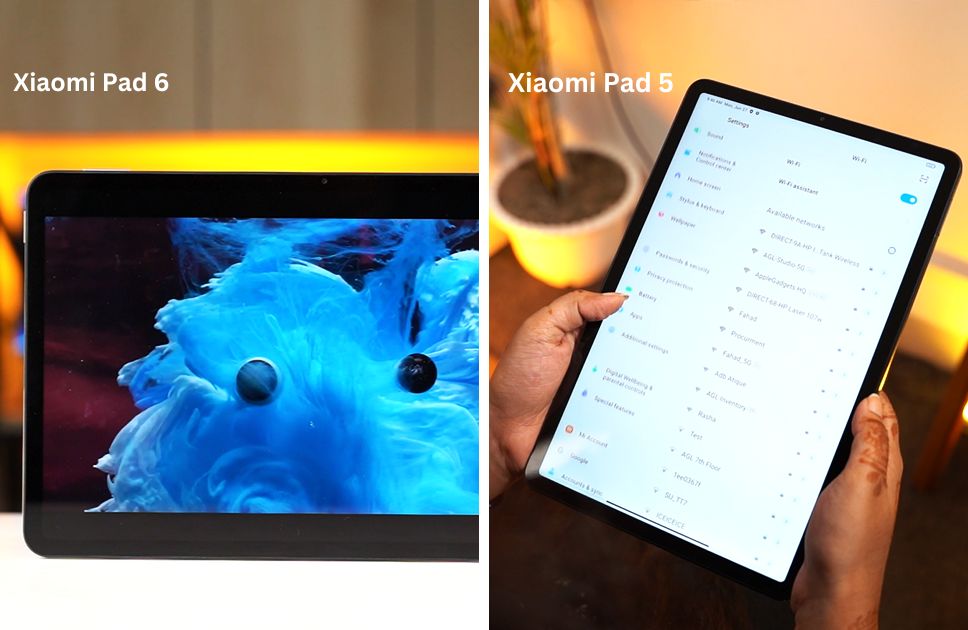
Overall, both tablets excel in delivering impressive performance for various tasks, with the Pad 6 outshining its predecessor in terms of processing speed, RAM technology, and Bluetooth connectivity, making it a preferred choice for those who seek enhanced gaming and multitasking experiences.
6. Xiaomi Pad 6 Vs Pad 5: UI & OS
- Android 13 on Pad 6, Android 11 on Pad 5
- MIUI Pad 14 (Pad 6),
- MIUI Pad 12(Pad 5)
The Xiaomi Pad 5 operates on Android 11, draped with the Xiaomi MIUI 12 skin. While it launched with Android 11, Xiaomi ensured upgrades were delivered to users by the close of 2021.
The tablet offers three major Android updates and four security patches, reflecting the brand’s commitment to consistent improvement. MIUI 12 provides a satisfying launcher experience, featuring familiar widgets and a visually appealing interface with tablet-friendly notification and control centers.
The homescreen accommodates shortcuts, widget creation, and an app drawer for organization. MIUI 12’s multitasking features like split-screen and floating window shortcuts, accessible through “Tap & Hold,” remain consistent and beneficial on both the Pad 5 and the newer Pad 6.
And, when you look at the new Xiaomi Pad 6, you get the latest Android 13 and comes with MIUI 14 skin with it, which is literally an upgrade from the 2021’s pad 5. But now with upgraded refresh rate and newer Android OS, the tablet delivers responsive navigation and efficient user interactions.
Xiaomi strategically blends market trends, incorporating intuitive gestures and swipes similar to competitors like OnePlus’s new Pad. The persistent home dash bar enhances multitasking and app accessibility.
“Smartphone link” feature establishes seamless connections with other Xiaomi devices, and the MIUI Pad 14 prioritizes on-device privacy protection for tasks like text recognition. The Pad 6 impresses further with an extended three-year Android OS update policy and five-year security patch support, exemplifying Xiaomi’s dedication to user satisfaction.
7. Xiaomi Pad 6 Vs Pad 5: Battery
- 8840mAh (pad 6), 8720mAh (pad 5)
- 33W Fast Charging
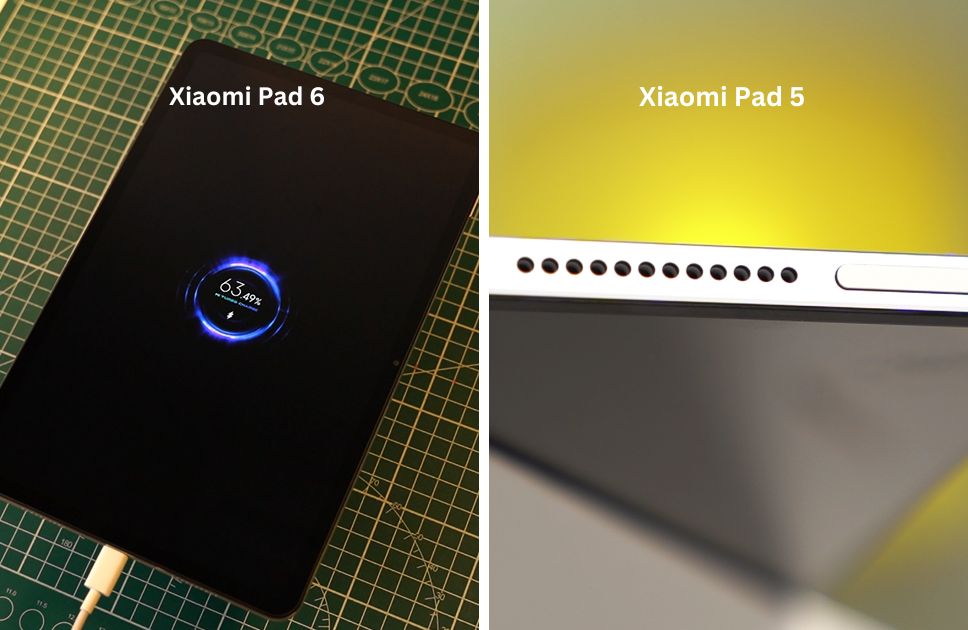
The Xiaomi Pad 5, released in 2021, is equipped with an 8720mAh battery, offering commendable longevity lasting a few days. While slightly less than the newer Pad 6, it delivers comparable performance.
With day-to-day use, excluding intensive gaming, the battery sustains for around 2 to 3 days. The inclusion of a 33W charger and Type-C cable ensures rapid charging, maintaining its charging speed edge over the Pad 6.
On the other hand, the Xiaomi Pad 6 boasts an upgraded 8840mAh battery compared to its predecessor, the Pad 5, which had an 8720mAh battery. This 120mAh increase comes without a price hike, a welcome improvement.
The practical battery performance aligns with Xiaomi’s claim of 27 days standby time, offering around 2 to 3 days of typical use. Notably, the Pad 6 excels with 65 hours of music playback, 16 hours of video, and an impressive 23 hours of reading. As you get an upgraded chipset, it is obvious your battery life will increase a bit.
The tablet supports efficient 33W fast charging which is the same as Pad 5, taking only 140 minutes for a full charge. A 30-minute charge provides a 40% boost, making it suitable for quick needs. Carrying the provided charger and Type-C cable is advised to make the most of this speed.
8. Overall Specs
Here is a more detailed overview of xiaomi pad 6 vs xiaomi pad 5, technical specifications are below for your further speculation-
| Specs | Xiaomi Pad 5 | Xiaomi Pad 6 |
| Display | 11 inch, IPS LCD, 1 Billion Colors, 1600 x 2560 pixels, 120Hz, HDR10, 500nits peak, 274ppi, Dolby Vision | 11 inch, IPS LCD, 1 Billion Colors, 1800×2880 pixels, 144Hz, HDR10, 550 nits peak, 309ppi, Dolby Vision |
| Protection & Weight | Corning Gorilla Glass 3 protection, Aluminum Frame, Plastic Back, 511g in weight, 6.85mm thickness | Corning Gorilla Glass 3 protection, Aluminum Frame, Aluminum Back, 490 grams in weight, 6.5mm thickness |
| Camera | Main: 13MP, f/2.0, (wide)
Features: Dual LED Flash, Panorama Video: 4K@30fps, 1080@30/60fps, Video: 1080@30fps, 720p 30fps, EIS |
Main: 13MP, f/2.2, (wide)
Features: Dual LED Flash, Panorama Video: 4K@30fps, 1080@30/60fps, Video: 1080@30fps, 720p 30fps, EIS |
| Platform | OS: Android 11, MIUI 14 (Upgradable to Android 13)
CPU: Qualcomm Snapdragon 860 (7 nm) Octa-Core (1×2.96 GHz Kryo 485 Gold & 3×2.42 GHz Kryo 485 Gold & 4×1.78 GHz Kryo 485 Silver) GPU: Adreno 640 |
OS: Android 13, MIUI 14
CPU: Qualcomm Snapdragon 870 (7 nm) Octa-Core (1×3.2 GHz Kryo 585 & 3×2.42 GHz Kryo 585 & 4×1.80 GHz Kryo 585) GPU: Adreno 650 |
| Ram-ROM | 128GB 6GB RAM, 256GB 6GB RAM (UFS 3.1) LPDDR4X RAM NO Micro-SD CARD SLOT |
128GB 6GB RAM , 128GB 8GB RAM, 256GB 8GB RAM (UFS 3.1)
LPDDR5 RAM |
| Battery | 8720mAh, 33W Wired, USB Type-C 2.0 (USB 3.2 Gen1) | 8840mAh, 33W Wired, USB Type-C 2.0 (USB 3.2 Gen1) |
| Audio | Quad Speakers (4 Speakers), Supports Dolby Atmos | Quad Speakers (4 Speakers), Supports Dolby Atmos |
| Features | Accelerometer, Gyroscope, Ambient light sensor, Hall sensor | Accelerometer, Gyroscope, Ambient light sensor, Hall sensor |
| Connectivity | Wi-Fi 802.11 a/b/g/n/ac/6 (2.4G WiFi), 5G WiFi, Bluetooth 5.0 | Wi-Fi 802.11 a/b/g/n/ac/6 (2.4G WiFi), 5G WiFi, Bluetooth 5.2 (Supports AAC/LDAC/LHDC 3.0) |
| Colors | Cosmic Gray, Pearl White, Green | Black, Blue, Gold |
9. Verdict
Well guys, long story short the choice between the Xiaomi Pad 6 and Pad 5 hinges on your priorities within the realm of budget-friendly tablets. Both contenders have their merits.
Opting for the Pad 5 makes sense if you’re seeking a Qualcomm chipset at a wallet-friendly cost. Its stylish demeanor, reminiscent of 2021, along with a commendable battery life, might be the right fit.
On the other hand, if you crave the latest in Xiaomi’s tablet design lineup, the Pad 6 beckons as well. With upgrades across the board—faster processing thanks to Snapdragon 870, an extended battery life, and a revamped aluminum build—it really gives you a solid handy feel to it.
Ultimately, the decision is yours. If affordability is paramount, the Pad 5 stands strong. However, for those embracing the allure of comprehensive upgrades, the Pad 6 shines brighter. Both deliver solid performance on a budget, but the Pad 6, with its enhancements, emerges as the superior choice.
Get the Xiaomi Pad 5, if:
> You require the previous generation tablet;
> You want a Snapdragon Xiaomi Pad in budget;
> You need a good battery life.
Get the Xiaomi Pad 6, if:
> You need the power of Qualcomm chipset in a tablet;
> You require a long lasting battery life;
> You want a solid build in a tablet.
Check Latest Price

Mohammad Shariful Islam is the CEO and MD of Apple Gadgets, a leading e-commerce and retail chain for gadgets in Bangladesh. He has a passion for technology, entrepreneurship, and holds a decade of experience in gadget E-Commerce. He’s committed to providing the best possible shopping experience for customers by delivering the latest and trendy gadgets.

